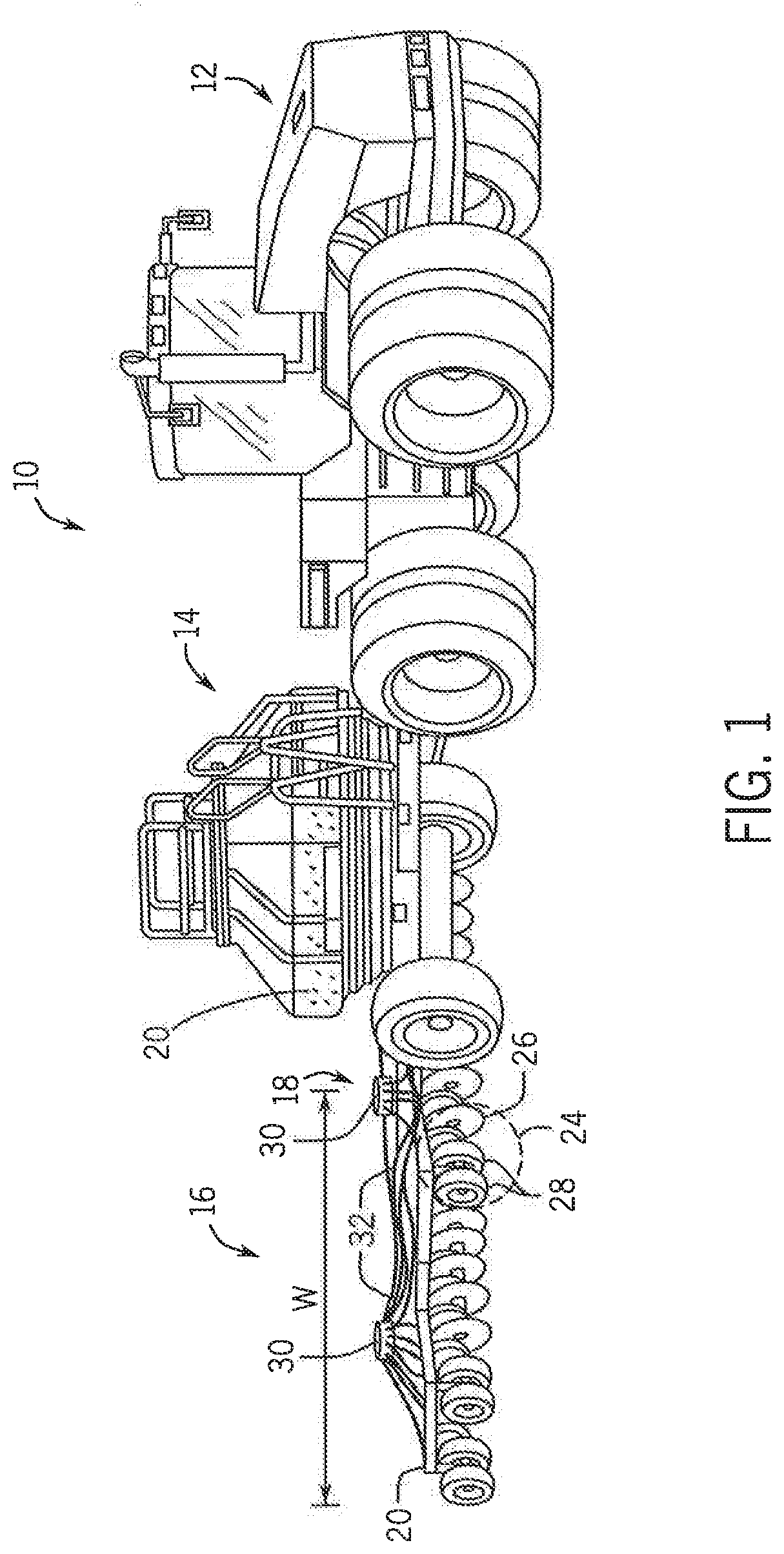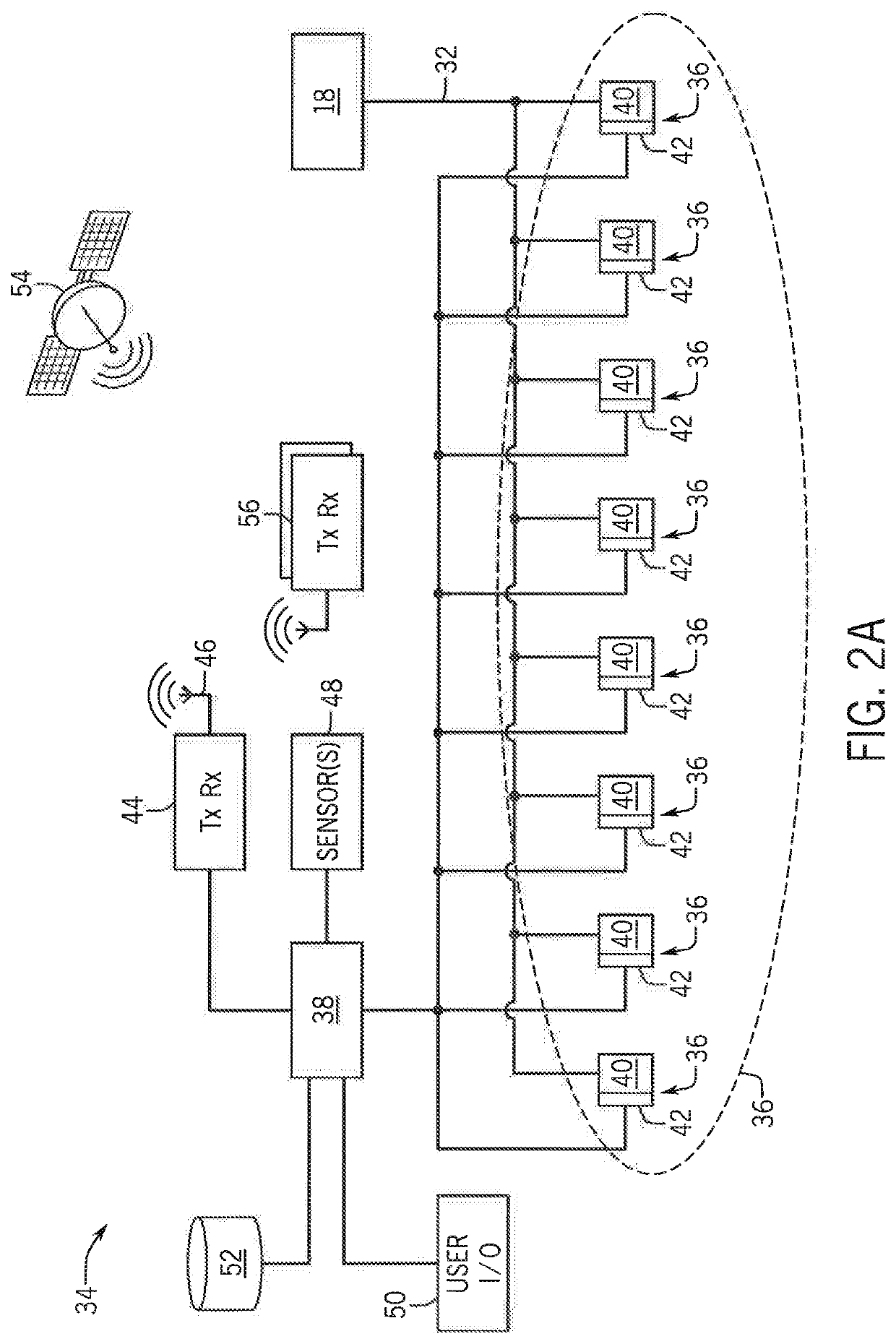Agricultural Product Application In Overlap Areas
a technology of agricultural products and overlap areas, applied in the direction of broadcast seeders, sowing, application, etc., can solve the problems of overlapping travel paths around, overlaps with earlier travel paths, heavy crops, etc., and achieve the effect of minimizing over-seeding
- Summary
- Abstract
- Description
- Claims
- Application Information
AI Technical Summary
Benefits of technology
Problems solved by technology
Method used
Image
Examples
Embodiment Construction
[0034]Referring now to FIG. 1, an isometric view of an exemplary embodiment of agricultural product delivery arrangement 10 is shown in accordance with the present invention. The product delivery arrangement 10 may be used for seeding a large agricultural field and may typically include a tractor 12 hitched in a conventional manner to an air cart 14 and a drill 16 having a width “W.” The air cart 14 could be, for example, a PRECISION AIR® cart, and the drill 16 could be, for example, an ATX700 air hoe drill, each available from the Case IH company.
[0035]A pneumatic distribution system 18 may be arranged with respect to the air cart 14 and the drill 16 for pneumatically delivering an agricultural product 20, such as seeds, fertilizer, and the like, from the air cart 14 to the drill 16 for distribution to the field. The pneumatic distribution system 18 includes a fan(s), which may be a centrifugal fan, for generating an airflow(s) that is directed through the pneumatic distribution sy...
PUM
 Login to View More
Login to View More Abstract
Description
Claims
Application Information
 Login to View More
Login to View More - R&D
- Intellectual Property
- Life Sciences
- Materials
- Tech Scout
- Unparalleled Data Quality
- Higher Quality Content
- 60% Fewer Hallucinations
Browse by: Latest US Patents, China's latest patents, Technical Efficacy Thesaurus, Application Domain, Technology Topic, Popular Technical Reports.
© 2025 PatSnap. All rights reserved.Legal|Privacy policy|Modern Slavery Act Transparency Statement|Sitemap|About US| Contact US: help@patsnap.com



